Types of W220 Air Suspension Systems
The W220 air suspension system, equipped on Mercedes-Benz S-Class models manufactured from 2000 to 2006, utilizes advanced air springs instead of conventional steel coils. This innovative suspension technology automatically adjusts to match road conditions, providing superior comfort and handling for drivers and passengers alike.
Key Benefit: The W220 air suspension system's adaptive nature allows the vehicle to maintain optimal ride height regardless of load or driving conditions, ensuring consistent handling characteristics and passenger comfort.
W220 S-Class Standard Suspension
Features electronically controlled dampers paired with air springs to deliver a customizable driving experience through selectable modes:
- Comfort Mode: Maximizes ride smoothness
- Sport Mode: Tightens handling response
- Normal Mode: Balanced performance
Perfect for: Everyday luxury driving with versatile performance options
W220 S-Class Airmatic Suspension
An integrated system combining air springs with sophisticated electronic damping control, featuring:
- Automatic height adjustment
- Speed-sensitive lowering for improved aerodynamics
- Raised clearance capabilities for challenging terrain
Perfect for: Drivers seeking the ultimate balance of comfort, performance, and adaptability
W220 S-Class Sport Package Suspension
Performance-oriented configuration featuring:
- Stiffer springs and damper settings
- Enhanced anti-roll bars
- Lower ride height for improved handling
- More responsive steering dynamics
Perfect for: Enthusiast drivers prioritizing handling precision and feedback
W220 S-Class Long Wheelbase Suspension
Specialized configuration for extended S-Class models designed to:
- Maximize rear passenger comfort
- Isolate cabin from road imperfections
- Provide exceptional noise damping
- Deliver smoother transitions over uneven surfaces
Perfect for: Chauffeur-driven vehicles and executive transportation
| Suspension Type | Key Features | Ideal Use Case | Ride Height |
|---|---|---|---|
| Standard | Selectable comfort modes, balanced performance | Daily luxury driving | 110mm (fixed) |
| Airmatic | Height-adjustable, speed-sensitive | Versatile driving conditions | 90-135mm (adjustable) |
| Sport Package | Stiffer springs, enhanced anti-roll bars | Performance-oriented driving | 95mm (lowered) |
| Long Wheelbase | Enhanced rear comfort, noise isolation | Executive transportation | 110mm (standard) |
Specifications of W220 Air Suspension
The Mercedes W220 air suspension system represents a significant advancement in automotive engineering, replacing traditional metal springs with sophisticated air-filled rubber chambers. This precision-engineered system maintains consistent ride height and vehicle clearance under varying loads and conditions.
Suspension Type
The W220 S-Class utilizes a full Airmatic suspension system at both front and rear axles. This advanced air suspension delivers:
- Precise control of vehicle movement
- Superior noise isolation compared to conventional springs
- Adjustable ride characteristics to match diverse driving conditions
- Automatic self-leveling capabilities regardless of load distribution
Suspension Components
The W220 air suspension system comprises several sophisticated components working in harmony:
- Air Bags: High-pressure chambers that support vehicle weight
- Air Compressor: Pressurizes the system and adjusts air volume
- Air Dryer: Removes moisture to prevent system damage
- Height Sensors: Monitor vehicle position relative to ground
- Control Unit: Central processor managing all system functions
- Valves: Direct airflow to specific suspension components
Vehicle Height Specifications
The W220 suspension system features dynamic ride height adjustment:
- Normal Ride Height: 110mm (4.3in) ground clearance
- High-Speed Mode: Lowers to 90mm (3.5in) above 86mph (140km/h)
- Off-Road/Low-Speed Mode: Raises to 135mm (5.3in) below 20mph (32km/h)
- Loading Mode: Can be manually lowered for easier entry/cargo loading
Performance Characteristics
The W220 air suspension delivers measurable performance advantages:
- Damping Range: Up to 40% variation between comfort and sport settings
- Response Time: System adjusts to road conditions within milliseconds
- Operating Temperature: Functional from -30°C to +80°C (-22°F to +176°F)
- System Pressure: Operates between 8-12 bar (116-174 psi)
W220 Air Suspension Operating Modes
| Operating Mode | Ride Height | Activation Condition | Primary Benefit |
|---|---|---|---|
| Normal | 110mm | Default setting | Balanced comfort and handling |
| Highway | 90mm | Speeds over 86mph (140km/h) | Reduced drag, improved stability |
| Raised | 135mm | Manual activation (below 20mph) | Increased ground clearance |
| Loading | 80mm | Manual activation when parked | Easier entry/exit and cargo loading |
Maintenance of W220 Air Suspension
Proper maintenance of the Mercedes W220 air suspension system is essential for ensuring its longevity, reliability, and optimal performance. Following these best practices will help preserve the integrity of this sophisticated system and prevent costly repairs.
Important: Neglecting air suspension maintenance can lead to premature system failure, uneven tire wear, and compromised vehicle safety. Regular inspections and preventive maintenance can extend system life by 50% or more.
Inspect Air Bags & Lines
Frequency: Monthly
- Examine air bags for cracks, bulges, or punctures
- Check air lines for pinching, wear, or disconnection
- Look for signs of leakage (soapy water test)
- Verify connections are secure and free from corrosion
Pro Tip: Even minor leaks can cause compressor overload and system failure
Clean System Components
Frequency: Quarterly
- Remove dirt and debris from air compressor
- Clean air dryer to maintain efficiency
- Use gentle, non-corrosive cleaners only
- Ensure components are fully dry before testing
Pro Tip: Compressed air can be used to clear hard-to-reach areas
Check Valve Block & Sensors
Frequency: Semi-annually
- Verify height sensor calibration with multimeter
- Compare readings to manufacturer specifications
- Test valve block operation across all modes
- Clean sensor connections to prevent false readings
Pro Tip: Sensor misalignment of just 1-2mm can affect performance
Replace Critical Components
Frequency: As needed or preventively
- Air compressor: 60,000-70,000km (37,000-43,000mi)
- Air dryer: Same interval as compressor
- Air bags: 80,000-100,000km (50,000-62,000mi)
- Valve block: 100,000-120,000km (62,000-75,000mi)
Pro Tip: Using OEM or high-quality replacement parts extends service life
| Maintenance Task | Frequency | Tools Required | Difficulty Level |
|---|---|---|---|
| System pressure check | Monthly | Pressure gauge, diagnostic tool | Low |
| Visual inspection | Monthly | Flashlight, mirror | Low |
| Component cleaning | Quarterly | Soft cloth, gentle cleaner | Low |
| Sensor calibration | Semi-annually | Multimeter, diagnostic tool | Medium |
| Compressor replacement | 60,000-70,000km | Socket set, vehicle jack, torque wrench | High |
| Air bag replacement | 80,000-100,000km | Socket set, spring compressor, torque wrench | High |
Expert Advice: The W220 air suspension system is sensitive to moisture contamination. Consider replacing the air dryer preventively every 2-3 years, even if the compressor hasn't failed, to protect the entire system from humidity-related damage.
How to Choose W220 Air Suspension Components
Selecting the appropriate W220 air suspension components requires careful consideration of multiple factors to ensure compatibility, performance, and reliability. Whether you're a wholesale buyer or individual vehicle owner, follow these guidelines to make an informed decision.
Vehicle Compatibility
Ensure the components are specifically designed for your Mercedes-Benz model:
- Verify compatibility with your exact W220 model year (2000-2006)
- Check for differences between standard and long-wheelbase versions
- Confirm compatibility with existing suspension control modules
- Verify fitment with AMG vs. non-AMG models if applicable
Load Capacity
Select components rated appropriately for your vehicle's weight and usage:
- Consider vehicle's GVWR (Gross Vehicle Weight Rating)
- Factor in typical passenger and cargo loads
- Add 15-20% capacity buffer for safety margin
- Account for towing requirements if applicable
Height Adjustment Range
Determine the height adjustment capabilities you need:
- Standard range: Approximately 45mm variance
- Enhanced range: Up to 60mm for special applications
- Consider minimum height for garage clearance
- Ensure maximum height meets off-road or driveway requirements
Quality and Durability
Assess component construction and materials:
- Look for reinforced air bags with multi-ply construction
- Verify compressor duty cycle and cooling efficiency
- Check for corrosion-resistant fittings and connections
- Research manufacturer reputation and track record
Installation Complexity
Consider your technical capabilities and available resources:
- Review installation instructions before purchase
- Check for specialized tools requirements
- Verify if calibration equipment is needed
- Consider professional installation for complex systems
Warranty Coverage
Evaluate the protection offered for your investment:
- Compare warranty duration between manufacturers
- Check for prorated vs. full replacement coverage
- Verify if installation affects warranty terms
- Look for transferable warranties if selling vehicle
Adjustability and Control
Assess the level of customization available:
- Check compatibility with factory control systems
- Look for manual override capabilities
- Consider aftermarket controller options
- Verify smartphone integration if desired
Maintenance Requirements
Factor in long-term service needs:
- Research availability of replacement parts
- Check service intervals for normal usage
- Consider diagnostic capability requirements
- Factor in maintenance costs over expected lifespan
| Component | Key Selection Factors | Typical Price Range | Expected Lifespan |
|---|---|---|---|
| Air Bags/Springs | Material quality, reinforcement layers, connection type | $150-$450 each | 4-7 years |
| Air Compressor | Duty cycle, cooling efficiency, noise level | $300-$800 | 3-5 years |
| Valve Block | Solenoid quality, electronic stability, sealing | $200-$600 | 5-8 years |
| Height Sensors | Accuracy, environmental resistance, signal stability | $80-$250 each | 6-10 years |
| Control Module | Programming flexibility, diagnostic capability | $400-$1200 | 8-12 years |
Purchasing Tip: When buying wholesale air suspension components, request sample units for quality testing before committing to large orders. This allows you to verify fitment, material quality, and performance characteristics with minimal financial risk.
DIY W220 Air Suspension Replacement Guide
Replacing the W220 air suspension system requires mechanical aptitude, proper tools, and careful attention to detail. While converting to conventional coil springs is possible, it's not recommended as it sacrifices the self-leveling functionality and superior ride quality of the original system. Follow this comprehensive guide for a successful DIY replacement.
Safety Warning: Air suspension systems operate under high pressure. Always fully deflate the system before beginning any work. Failure to do so can result in serious injury. If you're unsure about any step, consult a professional mechanic.
Study the Service Manual
Before beginning any work, thoroughly review the Mercedes-Benz service manual for your specific W220 model year:
- Locate all suspension components in the diagrams
- Note the torque specifications for all fasteners
- Understand the proper sequence of disassembly and reassembly
- Identify any model-specific considerations or warnings
Gather Required Tools and Parts
Assemble all necessary equipment before starting:
- Socket set with extensions (metric sizes)
- Torque wrench (capable of 25-150 Nm range)
- Spring compressor (if replacing air springs)
- Vehicle jack and jack stands (rated for vehicle weight)
- Diagnostic tool (to access suspension control system)
- New air suspension components (OEM or quality aftermarket)
- Thread-locking compound for critical fasteners
Deflate the Air Suspension System
Safely depressurize the system before disassembly:
- Connect diagnostic tool to the OBD port
- Access the "Air Suspension" control module
- Select "Maintenance Mode" or "Deflate System" option
- Verify pressure release through diagnostic feedback
- Disconnect the vehicle battery to prevent accidental inflation
Remove the Wheels and Access Suspension
Safely prepare the vehicle for suspension work:
- Loosen wheel lug nuts while vehicle is on the ground
- Jack up the vehicle and secure on jack stands at manufacturer-specified lift points
- Remove wheels completely for unrestricted access
- Remove any splash guards or covers protecting suspension components
Remove the Old Air Suspension Components
Carefully disassemble the existing system:
- Disconnect electrical connectors from height sensors and valves
- Label connections to ensure correct reassembly
- Detach air lines from suspension components (noting routing)
- Remove mounting bolts securing strut assemblies to vehicle
- Carefully lower and remove complete strut assemblies
Install New Air Suspension Components
Precisely fit replacement parts following reverse order:
- Position new strut assemblies and secure with mounting bolts
- Reconnect air lines following original routing
- Reattach electrical connections to height sensors and valves
- Tighten all fasteners to specified torque values
- Double-check all connections for proper seating
Inflate and Calibrate the System
Properly initialize the new suspension components:
- Reconnect vehicle battery
- Use diagnostic tool to exit maintenance mode
- Allow system to self-inflate and perform initial calibration
- Verify proper pressure readings in diagnostic tool
- Test system in various height settings to ensure proper operation
Perform Wheel Alignment
Ensure proper vehicle handling after suspension work:
- Have professional alignment performed at a qualified shop
- Ensure toe, camber, and caster settings meet specifications
- Address any steering wheel off-center conditions
- Test drive to verify proper handling and ride characteristics
DIY Pro Tip: Take photos throughout the disassembly process to document the original positioning and routing of components. These visual references can be invaluable during reassembly, especially for complex connections and cable routing.
Frequently Asked Questions
A W220 air suspension upgrade refers to enhancing or replacing the factory air suspension system on Mercedes-Benz S-Class (W220) models with improved components. These upgrades can range from installing more durable air springs and higher-capacity compressors to implementing advanced electronic control systems offering enhanced customization.
Premium upgrades might include:
- Military-grade air lines with increased pressure tolerance
- Reinforced air springs with multi-layer construction
- High-flow compressors with improved duty cycles
- Digital control systems with smartphone integration
- User-programmable ride height presets
The W220 air suspension operates through a sophisticated network of components working in harmony:
- Air Generation: An electrically powered compressor pressurizes ambient air
- Air Processing: The air dryer removes moisture to prevent system damage
- Distribution: The valve block directs compressed air to specific air springs
- Suspension Support: Air-filled rubber chambers (air springs) support the vehicle
- Height Monitoring: Sensors continuously measure vehicle height at each corner
- Electronic Control: The central ECU processes sensor data and adjusts air volume
When the system detects height changes due to passenger loading or road conditions, it automatically adjusts air volume in the springs to maintain the programmed ride height. At higher speeds, the system lowers the vehicle to improve aerodynamics and stability.
The W220 air suspension system offers numerous advantages over conventional spring suspensions:
| Benefit | Description |
|---|---|
| Adaptive Comfort | Automatically adjusts to road conditions for optimal ride quality |
| Load Leveling | Maintains consistent ride height regardless of passenger/cargo weight |
| Adjustable Height | Allows raising for rough terrain or lowering for high-speed stability |
| Selectable Driving Modes | Offers comfort, normal, and sport settings to match driver preferences |
| Reduced Body Roll | Improves handling by minimizing lateral weight transfer in corners |
| Enhanced Aerodynamics | Automatically lowers at highway speeds to reduce drag and improve efficiency |
The W221 air suspension is the evolution of Mercedes-Benz's air suspension technology featured in the successor to the W220 S-Class (2007-2013 models). While built on the same fundamental principles as the W220 system, the W221 suspension introduced several important advancements:
- Active Body Control (ABC): Advanced hydraulic system working alongside air springs
- Crosswind Stabilization: Automatic suspension adjustments to counter strong side winds
- Pre-Scan Road Surface: Some models feature cameras that read the road ahead and pre-adjust suspension
- Enhanced Comfort Modes: More sophisticated damping algorithms for improved ride quality
- Faster Response Time: Quicker adaptation to changing road conditions
While components are not directly interchangeable between W220 and W221 systems due to different mounting points and electronic interfaces, the underlying technology and maintenance principles are similar.
The W220 air suspension system is specifically engineered for Mercedes-Benz S-Class (W220) vehicles and cannot be directly installed in other vehicles without significant modification. Several critical factors limit cross-platform compatibility:
- Mounting Points: Designed specifically for W220 chassis geometry
- Electronic Integration: Requires communication with Mercedes-specific control modules
- Load Calculations: Engineered for the specific weight distribution of the S-Class
- Software Calibration: Programming tailored to W220 handling characteristics
For those seeking to install air suspension in other vehicles, universal aftermarket kits designed for specific makes and models are a more practical solution. These kits include appropriate mounting hardware and control systems designed for the target vehicle.
Professional automotive engineers can theoretically adapt W220 components to other vehicles, but this would require extensive custom fabrication, electronic engineering, and software programming – making it impractical and cost-prohibitive for most applications.


































































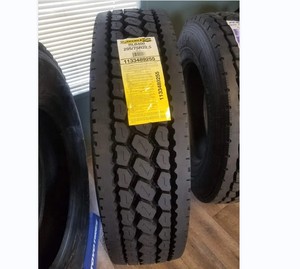








































































































































































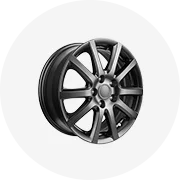
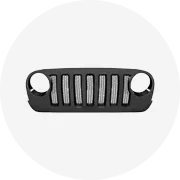
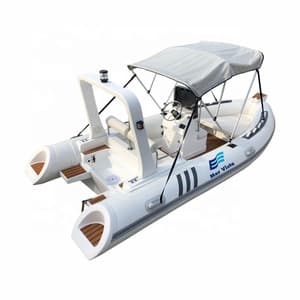
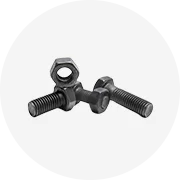
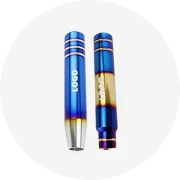
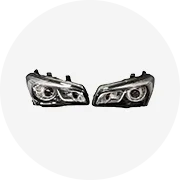
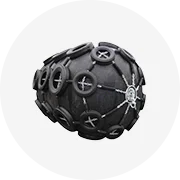
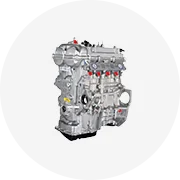
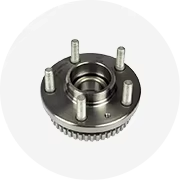
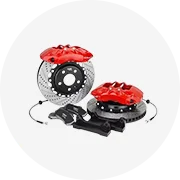
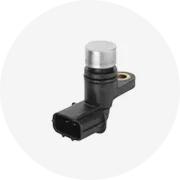

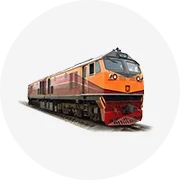
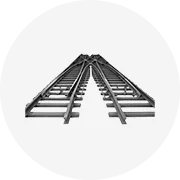
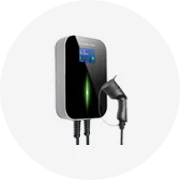
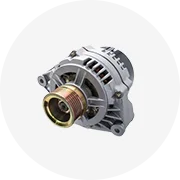






 浙公网安备 33010002000092号
浙公网安备 33010002000092号 浙B2-20120091-4
浙B2-20120091-4